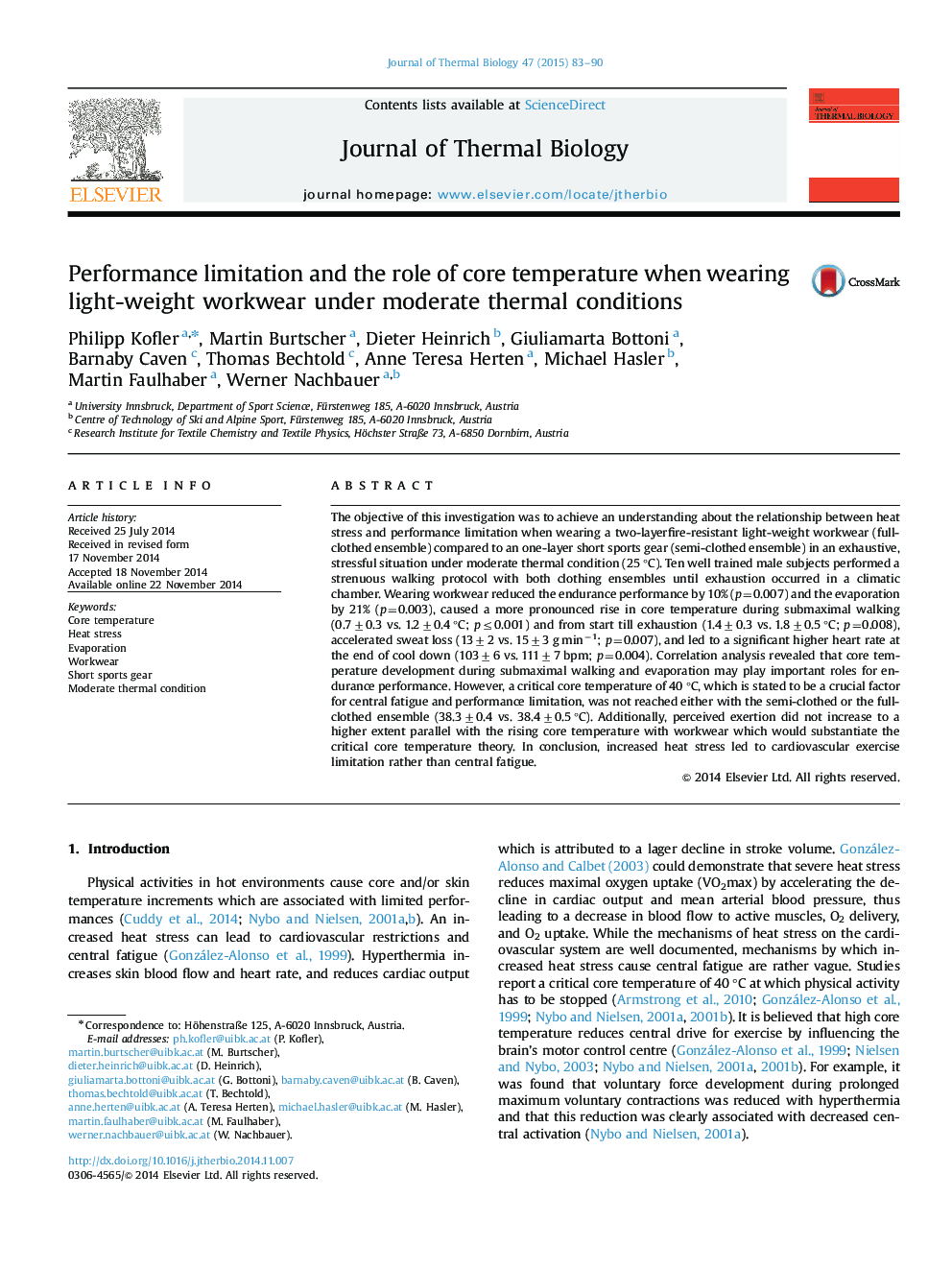| Article ID | Journal | Published Year | Pages | File Type |
|---|---|---|---|---|
| 2842933 | Journal of Thermal Biology | 2015 | 8 Pages |
•Light-weight workwear limited performance by 10% under moderate thermal condition.•Evaporation and core temperature played important roles for endurance performance.•Evaporation was reduced by 21% but critical core temperature (40 °C) was not reached.•Sweat loss was accelerated and cardiovascular stress was higher during recovery.•Increased heat stress rather led to cardiovascular limitation than central fatigue.
The objective of this investigation was to achieve an understanding about the relationship between heat stress and performance limitation when wearing a two-layerfire-resistant light-weight workwear (full-clothed ensemble) compared to an one-layer short sports gear (semi-clothed ensemble) in an exhaustive, stressful situation under moderate thermal condition (25 °C). Ten well trained male subjects performed a strenuous walking protocol with both clothing ensembles until exhaustion occurred in a climatic chamber. Wearing workwear reduced the endurance performance by 10% (p=0.007) and the evaporation by 21% (p=0.003), caused a more pronounced rise in core temperature during submaximal walking (0.7±0.3 vs. 1.2±0.4 °C; p≤0.001) and from start till exhaustion (1.4±0.3 vs. 1.8±0.5 °C; p=0.008), accelerated sweat loss (13±2 vs. 15±3 g min−1; p=0.007), and led to a significant higher heart rate at the end of cool down (103±6 vs. 111±7 bpm; p=0.004). Correlation analysis revealed that core temperature development during submaximal walking and evaporation may play important roles for endurance performance. However, a critical core temperature of 40 °C, which is stated to be a crucial factor for central fatigue and performance limitation, was not reached either with the semi-clothed or the full-clothed ensemble (38.3±0.4 vs. 38.4±0.5 °C). Additionally, perceived exertion did not increase to a higher extent parallel with the rising core temperature with workwear which would substantiate the critical core temperature theory. In conclusion, increased heat stress led to cardiovascular exercise limitation rather than central fatigue.
